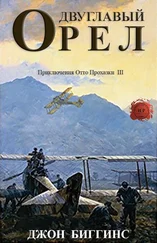As for myself, sans aeroplane, I was left to kick my heels and try to pass the time as best as I could. This was no easy task I can assure you at k.u.k. Fliegerfeld Caprovizza in the summer of 1916. The flying field itself was just that: a field used the previous year for growing barley, and now used for flying military aircraft, with no modification other than getting an infantry battalion to march up and down it for an afternoon to flatten out the worst of the ruts and hummocks. Amenities there were none; not even a proper canteen for the men. Our sole luxury, compared with Flik 19 at Haidenschaft, was that we were on the banks of the Vippaco. True, the river was low in the summer drought, but in the baking August heat and dust of that valley it was pleasant to be able to bathe in what remained of it, even if the water barely reached knee level. I was particularly glad of this I must say, because I was still condemned to wear my navy-blue serge jacket, my field-grey summer tunic having gone astray in the post on its way up from Cattaro. But in wartime an officer cannot reasonably bathe more than twice a day, and my tent was insufferably hot, and I had soon run out of books to read; so when I was not on duty or filling in Kraliczek’s endless forms I had no choice but to go off exploring.
In truth, there was little enough to explore in the immediate neighbourhood of Haidenschaft. Before the war this part of the world—the Gefurstete Grafschaft Gorz und Gradiska, to give it its official title— had been an obscure and seldom-visited region: a strange little corner of Europe where the Teutonic, Latin and Slav worlds met and overlapped. The Vippaco Valley was moderately fertile, but the stony Carso region to southwards had long been one of the most poverty-stricken parts of the entire Monarchy, fit to stand comparison with Eastern Galicia or the backwoods of Transylvania as an area where most of the men called up for the Army each year were sent home as being too weak and ill-nourished to stand the rigours of military service: some of them with voices that had still not broken at nineteen years of age.
Once upon a time—perhaps back in the fourteenth century or thereabouts—the municipality of Haidenschaft (or Aidussina or Ajdovscina) had evidently been a place of some note, at least to judge from what remained of the town walls that had once surrounded it. In fact I have a vague recollection lurking at the back of my mind that “Count of Haidenschaft” figured somewhere about number fifty-seven among the sixty-odd titles read out at Imperial coronations. But perhaps I am wrong about that: perhaps by the time I arrived there the place had been in decline for so long that not even Habsburg court protocol took cognisance of it any longer. Certainly the town was situated picturesquely enough, nestling beneath the limestone crags of the Selva di Ternova which towered above it to north and east. But otherwise there was little to remark upon. In fact I am not really sure that, whatever its former status, the appellation “town” fairly describes Haidenschaft in the year 1916. It was one of those seedy, sleepy little settlements, scattered in their thousand across the Dual Monarchy, that were not quite large enough to be towns but still too large to be villages, places whose sole reason for existence seemed to be the Habsburg state’s mania for scribbling on sheets of Kanzlei- Doppel paper. Apart from the ochre-painted government offices—the town’s largest building as always—there were two streets and a half-dozen shops, a small town square, the usual miniature corso with its row of chestnut trees, a gendarmery post—and very little else. The houses were Italian-looking, with their crumbling stucco and wide eaves and slatted wooden shutters. But the red roof tiles were still weighted down Slovene- fashion with chunks of limestone to stop them becoming airborne in the bora, while the town’s two peasant-baroque churches, though they had Venetian-style campaniles, both wore on top of these the octagonal onion- domes which are the hallmark of Central Europe. The war had brought airfields and supply dumps and a makeshift hospital in wooden huts just outside the town. But off-duty entertainments were still basic, consisting of two cafes, packed solid now with field grey; a makeshift cinema under awnings rigged against the town wall; and two military brothels: the “Offizierspuff” and the “Mannschaftspuff.”
Ever since losing my virginity in such an establishment in the Brazilian port of Pernambuco in 1902 I had never again set foot in a maison- close except on service business. And even if I had not recently married a delightful woman whom I loved to distraction, I would still certainly have found the commissioned-ranks bordello intensely unappetising: a business (no doubt) of fake champagne and twenty-year-old newly commissioned Herr Leutnants trying to swagger like hard-bitten soldiers of fortune in front of the bored-looking girls. But as for the establishment provided by the War Ministry for the common soldiery, as I walked past it struck me as one of the least alluring suburbs of that peculiar twentieth-century version of hell known as the Front.
Over the years, in the course of my duties as a junior officer leading naval police pickets, I had seen many such places in the seaports of the Mediterranean. But what I remembered of them, I have to admit, was not so much their sleaziness as the rather jolly atmosphere of roistering debauchery that surrounded them: sailors and marines of all nationalities laughing and hitting one another in the street outside among the pimps and accordion players in that seafarer’s elysium still known (I remember) in the Edwardian Royal Navy as “Fiddler’s Green,” or in the French fleet as the “Rue d’Alger.” Here though I was struck by the utter sadness of it all: dead-eyed soldiery on a few hours’ leave from the trenches, queuing patiently two-by-two under the supervision of the Provost NCOs, waiting their turn to exchange five kronen for a two-minute embrace on an oilcloth-covered couch, then trousers on and out into the street again. There they waited in their dust-matted grey uniforms, like animals in the layerage pen at a slaughterhouse; standing as patiently as they would soon queue in the trenches, laden down with stick-grenades and equipment, waiting for the whistles to blow and the ladders to go up against the parapet. It seemed to me that not the least of the horrors of machine-age warfare was the way in which it had brought the assembly-line system even to the time-hallowed business of military fornication.
No doubt the townsfolk of Haidenschaft were doing well enough out of the war, standing up or lying down. But there would have been little disaffection in these parts anyway. Beneath a thin Austro-Italian veneer the people of this region were mostly Slovenes, and the Slovenes had every reason to support Habsburg Austria because the alternative was so much worse. The Italians claimed this whole area as their own terri- tory—in fact had been secretly promised it by Britain and France once the war was over—and it was widely feared that if they ever managed to lay hands upon it they would soon set about Italianising the inhabitants. The anxieties of the local people were well grounded as it turned out, for in 1920 Italy annexed this whole region and embarked upon a vigorous campaign against the Slovene language and customs, making liberal use of castor oil and rubber truncheons to persuade the natives of the superiority of Italian culture.
For its part Vienna had always tended to look down upon the Slovenes as a “Dienervolk,” a peasant people without a culture or literature or educated class of its own. Yet of all the Habsburg peoples in those years I suppose that none fought as bravely or as long in the service of Old Austria. Ethnographers used to say in those days that the Slovenes were the original stock from which all the Slav peoples sprang, preserved in their purity by centuries of isolation in their mountain valleys. I have no idea what truth there was in that theory: probably like most “racial science” it was complete twaddle. But certainly the Slovenes had a characteristic look about them: a squarish, fair-haired people with strong, regular, wide-mouthed faces and long straight-bridged noses and grey-blue eyes. Even in 1916 the country people still wore what would now be described as “folk costume”—wide-brimmed felt hats, embroidered waistcoats and wide breeches for the men; bodices and brightly striped flounced skirts for the women—for the simple reason that they had never worn anything else. Relations between these villagers and the k.u.k. Fliegertruppe were very cordial, despite the odd haystack demolished by a forced landing. Many a crashed Austrian airman in those years would return to his flying field lying in the straw of a peasant cart, accompanied by the entire village with the priest at its head and surrounded by baskets of hard-boiled eggs and curd cakes to sustain him during his stay in hospital.
Читать дальше












